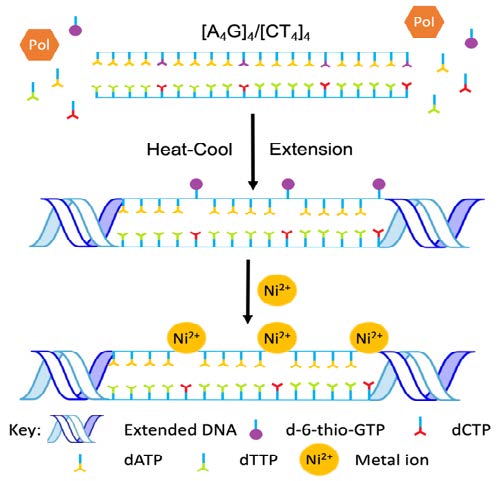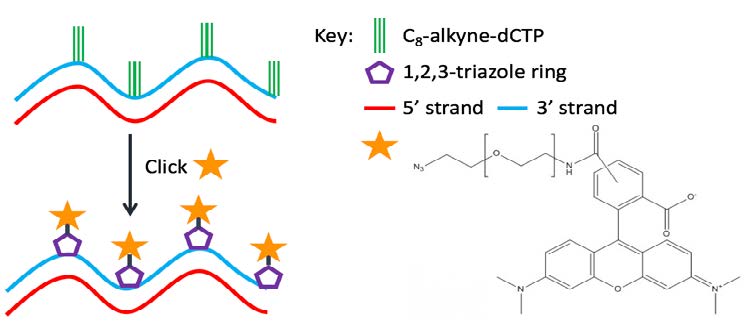
Designer DNA for nanomaterials and sensing applications
Charlotte Hepples, Morag Grierson, Colette Whitfield, Rachel Little, Samantha Lunn, Eimer Tuite, and Andrew Pike
Chemistry, Bedson Building, Newcastle University, Newcastle-upon-Tyne, NE1 7RU, UK
DNA of user-defined sequences, and of lengths over 20,000 base pairs (bps) can be enzymatically produced from a pair of starting short 20-base oligoseeds and by employing a repeating heat-cool PCR-like synthetic cycle.1,2 Functional nucleobases, including C5-alkynyl-dC, 6-thio-dG and C5- iodo-dT can be also be incorporated in the extended DNA products to yield designer DNA that contains multiple modification/binding sites.3 This talk will outline some recent additions to the variety of possible designer DNA-based nanomaterials using phosphorothioate linkages and will also introduce the development of an enhanced DNA-sensing system that offers an improved confidence in the detection of a small number of base-pair mismatches.
Phosphorothioate modified DNA and DNA that contains 6-thio-dG can be used to direct metal ions to specific sites through the well-established Metal-Sulfur interaction. Phosphorothioates can be enzymatically added into designer DNA and provide reactive sites along the DNA backbone without interrupting the DNA base-pairs – Fig 1A. In an organic approach, alkyne-modified DNA was also produced to demonstrate the facile modification of a 1D-nanomaterial via “click chemistry” by an azido (N=N+=N-)-fluorescein, Fig 1B.
The synthesis of DNA with modifications situated at user-defined positions suggests that long designer DNA may be a useful for the controlled fabrication of unique 1-D nanomaterials where composition control is required in sequences over 100 bps.
Finally, the of designer DNA that contains sequences of interest in the detection of colorectal cancer and cystic fibrosis will be discussed to highlight how this synthetic approach may deliver enhanced confidence in the detection diseases that occur due to a small number of base mutations.
References:
[1] C. J. Whitfield et al., Angew. Chem. Int. Ed. 2015, 54. 8971.
[2] R. C. Little et al., DNA Nanotechnology. Humana Press Inc, 2018, pp.11-21
[3] C. J. Whitfield et al., Chem. Eur. J. 2018, 24(57) 15267.
Acknowledgment: This work was in part supported by DNA Surf, H2020-MSCA-RISE-2017

© 2025 · Biophotonics4Future
Leibniz Institute of Photonic Technology
Albert-Einstein-Str. 9
07745 Jena | Germany
www.leibniz-ipht.de





